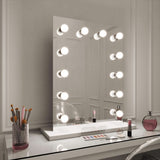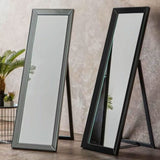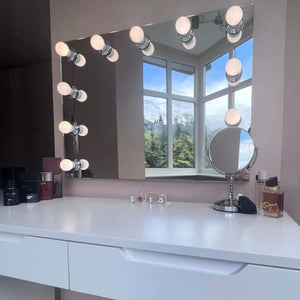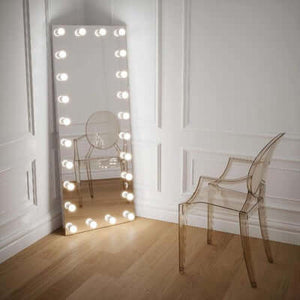If you're new to the world of makeup, adding a primer to your makeup routine can be just the thing you need to switch up your makeup game.
Primers come in various forms, colors, consistencies, and packaging. From color-correcting primers to mattifying primers, you'll agree with me that there's almost always a primer to address your makeup needs.
But for today, our focus will be on helping you learn everything you need to know about mattifying primers.
Here's what to expect:
- What Is a Mattifying Primer And Who Should Use It?
- How Does A Mattifying Primer Work?
- Who Can Benefit From Using A Mattifying Primer?
- How To Use A Mattifying Primer
- Mistakes To Avoid When Using A Mattifying Primer
- Frequently Asked Questions
What Is Mattifying Primer And Who Should Use It?
Mattifying primers are just like other makeup primers that are used to create a smooth and even base for makeup application.
But according to makeup artist Markesha Ross, the difference is that its main purpose is to control oil and shine on the skin, providing a matte finish that can last for hours.
But the difference is that its main purpose is to control oil and shine on the skin, providing a matte finish that can last for hours.
Mattifying primers are particularly useful for people with oily or combination skin, as excess oil on the skin can cause makeup to slide off or break down throughout the day.
By creating a matte base, mattifying primer helps to keep makeup in place and reduces the need for touch-ups.
Get a flawless look with our range of vanity mirrors with light for that perfect finish.
Some mattifying primers also contain ingredients that can help to blur the appearance of pores, fine lines, and other imperfections, creating a smoother-looking complexion.
How Does A Mattifying Primer Work?
The primary function of a mattifying primer is to reduce the appearance of oil on the skin and create a smooth, matte surface for foundation or other makeup products to adhere to.
Mattifying primers typically contain a combination of ingredients that work to absorb excess oil and reduce the shine of the skin.
Some common ingredients found in mattifying primers include silicone, which can help to fill in fine lines and pores and create a smooth surface, as well as talc, which can help to absorb oil and reduce shine.
Additionally, mattifying primers may also contain ingredients like salicylic acid, which can help to exfoliate the skin and unclog pores, or antioxidants like vitamin E, which can help to protect the skin from free radical damage.
When applied to the skin, a mattifying primer works to create a smooth, even surface that can help makeup to last longer and look more polished.
By reducing excess oil and shine, a mattifying primer can also help to prevent makeup from smudging or transferring throughout the day.
Who Can Benefit From Using A Mattifying Primer?
If you have oily or combination skin, you most definitely would benefit from using a mattifying primer to help control shine and give you that matte look throughout the day.
Mattifying primers can also be beneficial for people with enlarged pores because it helps to minimize their appearance and create a smoother base for makeup application.
However, anyone who wants to create a matte finish on their skin can use a mattifying primer, regardless of their skin type.
It's important to note that if you have dry skin, using a mattifying primer may not be the best option, as it can further dry out the skin and create a flaky or cakey appearance.
How To Use A Mattifying Primer
Now that you know what a mattifying primer is, Here are some steps on how to use a mattifying primer:
- Start with a clean and moisturized face. Make sure to remove any excess oil or dirt from your skin before applying the primer.
- Apply a small amount of mattifying primer to your fingertips or a makeup brush. A pea-sized amount is usually enough for your entire face.
- Apply the primer to your T-zone and other areas where you tend to get oily. Gently massage the primer into your skin, making sure to blend it evenly.
- Allow the primer to dry for a few minutes before applying your foundation or other makeup products. This will help the primer to set and create a smooth surface for your makeup to adhere to.
- Apply your foundation or other makeup products as usual. The mattifying primer will help to control shine and oiliness, giving you a matte and flawless finish.
If you want a longer-lasting matte look all day, you can also
- Try using an oil-free foundation.
- After applying your foundation, use a translucent powder to set your makeup and control shine.
- Lastly, carry blotting papers with you to quickly absorb excess oil without disturbing your makeup.
Remember to choose a mattifying primer that suits your skin type and concerns.
If you have dry skin, you may want to look for a hydrating primer that also has mattifying properties.
If you have oily skin, a mattifying primer with oil-controlling ingredients like salicylic acid or kaolin clay may work best for you.
Optimizing Your Makeup Application Environment
After mastering the use of a mattifying primer and understanding its benefits for your makeup routine, it's essential to consider where and how you apply your makeup.
A well-lit, comfortable, and functional space can significantly enhance your makeup application experience. One key element of such a space is the dressing table mirror.
Choosing the right mirror can make a huge difference in achieving precise and flawless makeup application. A led light dressing table mirror provides ample lighting and a clear view, allowing you to see every detail of your makeup.
This ensures that your mattifying primer and subsequent products are applied perfectly, giving you the best possible finish.
Mistakes To Avoid When Using A Mattifying Primer
Here are some tips to help you avoid common mistakes while using a mattifying primer:
-
Choose the right primer for your skin type: Not all mattifying primers are created equal. Some are formulated for oily skin, while others are better suited for combination or normal skin types. Make sure to choose a primer that matches your skin type to avoid any potential issues.
-
Apply the primer evenly: Make sure to apply the primer evenly to your entire face. Use a small amount of product, and blend it in well. Don't forget to apply it to areas that tend to get oily, such as your T-zone.
- Don't apply too much primer: Using too much primer can cause your makeup to look cakey and unnatural. Start with a small amount and build up as needed.
-
Wait for the primer to dry: Allow the primer to dry completely before applying your makeup. This will help to ensure that your foundation goes on smoothly and lasts longer.
-
Don't mix primer with moisturizer: Mixing primer with moisturizer can dilute the product and reduce its effectiveness. Instead, apply your moisturizer first and allow it to absorb before applying the primer.
-
Don't use primer as a replacement for skin care: While a good primer can help to control oil and create a smooth base for your makeup, it should not replace your regular skincare routine. Be sure to cleanse, tone, and moisturize your skin before applying the primer for the best results.
-
Don't touch your face too much: Touching your face throughout the day can transfer oil and bacteria to your skin, causing your makeup to break down faster. Try to avoid touching your face, and use blotting papers or powder to touch up any areas that get oily.
Frequently Asked Questions About Mattifying Primer
1: Can a mattifying primer be used alone?
Yes, a mattifying primer can be used alone to create a natural, matte finish on the skin. However, it is typically used as a base for foundation and other makeup products.
2: Can a mattifying primer be used with other types of primers?
Yes, a mattifying primer can be used with other types of primers, such as pore-minimizing or color-correcting primers, to address multiple skin concerns at once.
3: How should a mattifying primer be applied?
A mattifying primer should be applied after moisturizer and sunscreen but before foundation or other makeup products. It can be applied with clean fingers, a brush, or a sponge, and should be blended evenly over the face.
4: How long does a mattifying primer last?
The longevity of a mattifying primer varies depending on the product and the individual's skin type and activities. However, most mattifying primers can last up to eight hours or more.
5: Are there any side effects of using a mattifying primer?
While rare, some people may experience skin irritation or breakouts from using mattifying primers. It is important to patch-test any new product before applying it to the entire face and to discontinue use if any adverse reactions occur.
6: Can a mattifying primer be used with other mattifying products?
Yes, a mattifying primer can be used with other mattifying products, such as setting powders or sprays, to further control shine and oiliness on the skin.
Liquid error (sections/article-template line 192): Invalid form type "13\n", must be one of ["product", "storefront_password", "contact", "customer_login", "create_customer", "recover_customer_password", "reset_customer_password", "guest_login", "currency", "activate_customer_password", "customer_address", "new_comment", "customer", "localization", "cart"]
 Alicia Hollywood Mirror 60cmx80cm
Alicia Hollywood Mirror 60cmx80cm Angelina Full Length Arch Hollywood Mirror 160 x 60cm
Angelina Full Length Arch Hollywood Mirror 160 x 60cm Angled Luna Mirror-Cheval Black
Angled Luna Mirror-Cheval Black Angled Luna Mirror-Cheval Gray
Angled Luna Mirror-Cheval Gray




































